My mum’s sooji halwa is special because it’s got this gorgeous caramel-ly nuttiness that comes from roasting the semolina (sooji) in ghee. You’ll never make it any other way!
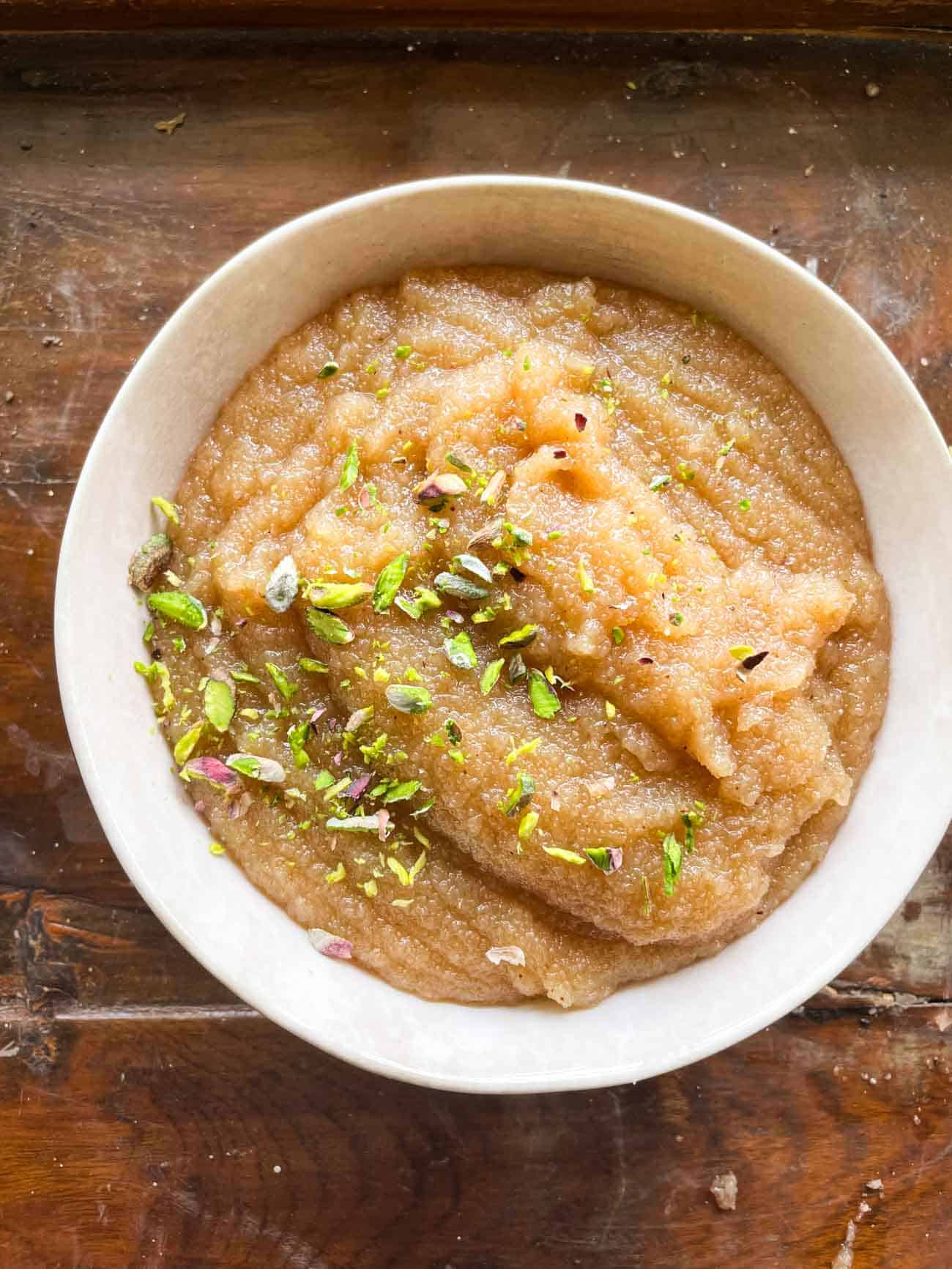
Love Indian Sweets? Try my Easy Rice Kheer (Indian Rice Pudding), Homemade Jalebis – Thin and Crispy or Coconut Barfi (Nariyal Burfi)
There is nothing that screams Indian festivities quite like sooji halwa does (okay and maybe also Malpua, Rabdi and Kheer!), and I think this recipe is really special. There’s a gorgeous caramel-like glaze on this suji halwa that coats every little bit of sooji – it’s my mum’s trick and the only way I like to make it now!
The magic lies in patiently roasting the sooji in ghee for 20-25 minutes till the colour changes from white to a deep brown. That deep, toasty flavour combined with the smooth, melt-in-your-mouth texture makes it an instant family favourite. Whether it’s a festival, puja, or just a sweet craving on a weeknight, this halwa is just the thing to make and it that always hits the spot!
Jump to section: Sooji Halwa
Sooji Halwa Ingredients Overview
Sooji (Semolina/Rava) – The star ingredient; use fine sooji for a smooth texture and rich flavour. Bombay sooji works best here because the grains are neither too big nor too small. Bansi rawa will also work.
Besan (Gram Flour) – Adds depth and enhances the nutty aroma.
Ghee – The key to flavour and richness — use good quality ghee for best results.
Sugar – Balances the nutty flavour with sweetness.
Water – Helps cook the semolina into a soft, smooth halwa.
Nuts (Almonds/Pistachios) – For crunch and garnish.
How to make sooji halwa
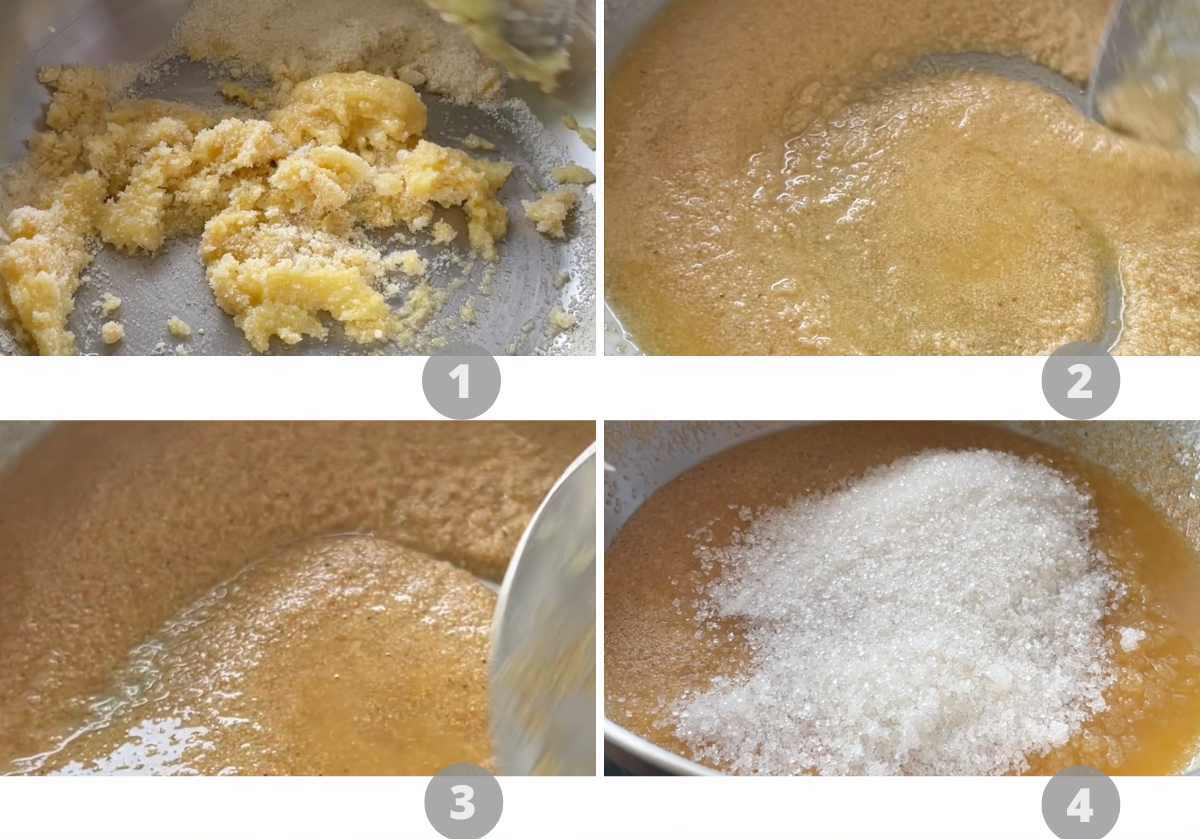
1. In a pan, roast the sooji and besan together over low flame, stirring continuously for 5-6 minutes. Add the ghee and continue cooking on low flame.
2. Stir constantly until the mixture changes to a light chocolate brown colour and becomes fragrant.
3. Continue roasting until the brown becomes a little deeper and darker.
4. Add the sugar and mix it in.
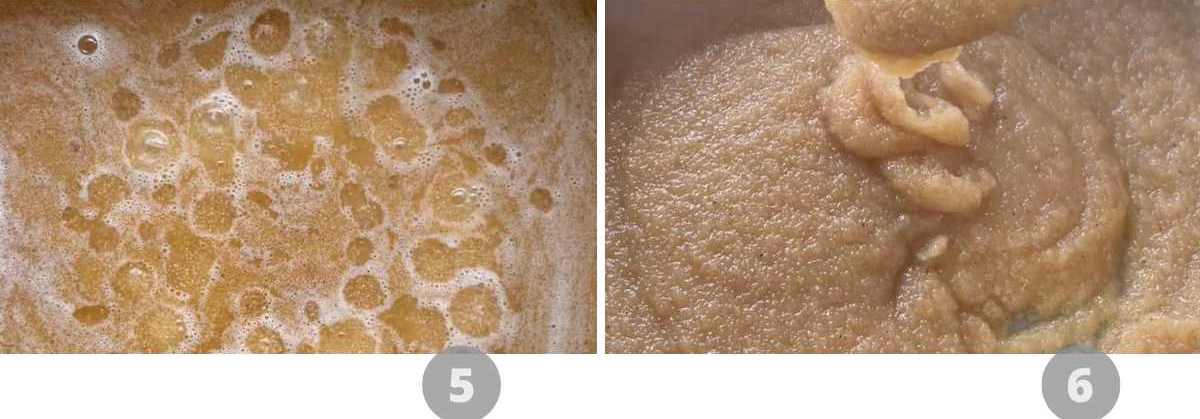
5. Slowly pour in the water while stirring continuously. Increase the flame. Be cautious as the mixture may bubble and splutter.
6. Keep stirring until the halwa thickens, and you see ghee starting to ooze out from the sides. Garnish with slivered pistachios or almonds.
Frequently Asked Questions
For a smooth, melt-in-the-mouth halwa, use Bombay sooji (fine semolina). For a nuttier, coarser texture with more bite, use Bansi rava. Both work, it just depends on the texture you prefer!
Yes! Jaggery gives the halwa a deep, earthy sweetness and a slightly different colour. Just make sure to melt and strain the jaggery first (to remove impurities) before adding it in.
This happens if water is added too quickly. Always add water slowly while stirring continuously to prevent lumps.
You can use butter or oil, but I’d really suggest you don’t! The ghee is what makes this Sooji Halwa!
They’re variations of the same dish. Rava Kesari includes saffron or food color, while sheera may include milk instead of water.
Yes! Store in the fridge for up to 2–3 days. Reheat with a splash of water or milk to soften.
Absolutely, feel free to adjust to taste. Just remember that less sugar means less stickiness in texture.
Richa’s Top Tips
- Don’t skimp on the ghee. That’s where the flavor and that glistening texture come from.
- Always roast sooji on medium heat — too high and it will burn, too low and it won’t develop flavour.
- Bombay sooji works best here because the grains are neither too big nor too small. Bansi rawa will also work.
- Be patient and pay attention. Be prepared to spend half an hour in the kitchen. Sooji can burn pretty quickly or brown unevenly if not stirred often. So keep stirring every minute or so for the best, even results.
- Remember the halwa will thicken as it cools, so take it off the heat slightly before your desired consistency.
- Add the sugar before the water or the sugar will caramelize and harden when it hits the water.
- The consistency should be thick but runny. If its too thick, it’ll start to become gloopy.
Serving Ideas
- Offer as prasad during pujas or festivals – I love to pair this halwa with kala chana, vrat wale dahi aloo, and pooris!
- Serve warm, garnished with almonds, cashews, or pistachios.
- Add saffron strands soaked in warm milk for colour and aroma.
Storage Tips
Store in an airtight container and refrigerate for up to 2-3 days. Reheat with a splash of water or milk to soften.
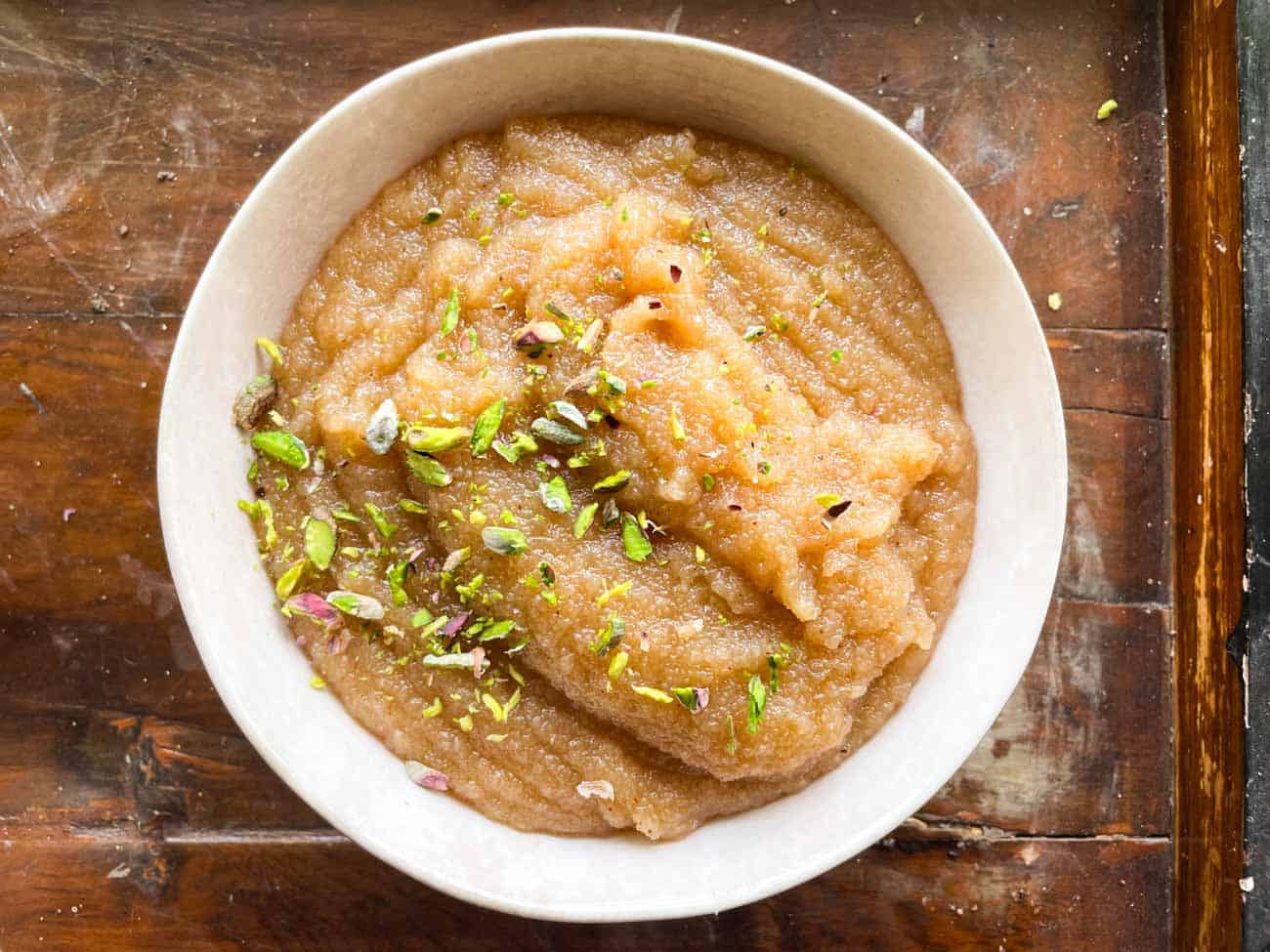
One bite of this Sooji Halwa and you’ll understand exactly why I can’t stop raving about it! It’s warm, rich, comforting – everything I’d want in a dessert (and honestly just the thing for this festive season!) I hope you give this one a try <3
Make sure to send me your recreations over on my IG @my_foodstory, I loveee to see them!!
Also check out my Navratri recipes round up for all the inspo you need this festive season ❤️
Watch How To Make Sooji Halwa Video
LOVE THIS RECIPE? Subscribe to my newsletter and be the first to receive all new recipes!
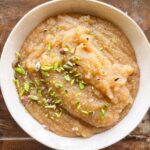
Sooji Halwa
Ingredients
- 1 Cup Sooji or Semolina
- 1 1/2 tablespoons Besan or Gram Flour
- 1/2 Cup plus 1 tablespoon Ghee or Clarified Butter
- 3/4 Cup Sugar
- 3 Cups Water
Instructions
-
In a pan, roast the sooji and besan together over low flame, stirring continuously for 5-6 minutes.1 Cup Sooji or Semolina, 1 1/2 tablespoons Besan or Gram Flour
-
Add the ghee and continue cooking on low flame, stirring constantly until the mixture changes to a light chocolate brown color and becomes fragrant.1/2 Cup plus 1 tablespoon Ghee or Clarified Butter
-
Add the sugar and mix it in. Slowly pour in the water while stirring continuously. Increase the flame. Be cautious as the mixture may bubble and splutter.3/4 Cup Sugar, 3 Cups Water
-
Keep stirring until the halwa thickens, and you see ghee starting to ooze out from the sides.
-
Garnish with slivered pistachios or almonds.
Video
Nutrition
This article was researched and written by Navya Khetarpal.
The post Amazing Sooji Halwa appeared first on My Food Story.

0 Comments